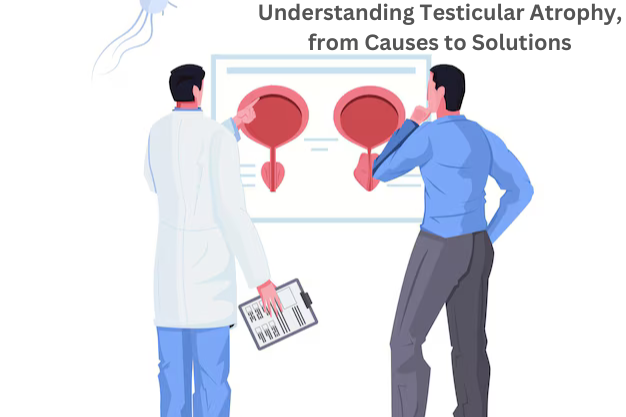Understanding Testicular Atrophy, from Causes to Solutions
Testicular atrophy, a condition characterized by the shrinkage of one or both testicles, can significantly impact male fertility and overall health. Understanding the causes, symptoms, and treatment options is crucial for individuals experiencing this issue.
Causes of Testicular Atrophy
Several factors can contribute to testicular atrophy, including:
1. Hormonal Imbalances:
- Low testosterone levels
- Pituitary gland disorders
2. Injury or Trauma:
- Physical trauma to the testicles
- Surgery in the groin area
3. Infection:
- Mumps orchitis
- Epididymitis
- Orchitis
4. Genetic Disorders:
- Klinefelter syndrome
- Other genetic conditions affecting testicular development
5. Medications:
- Certain medications, like anabolic steroids
6. Environmental Factors:
- Exposure to toxins, radiation, or extreme heat
Symptoms of Testicular Atrophy
The primary symptom of testicular atrophy is a noticeable decrease in the size of one or both testicles. Other potential symptoms may include:
- Reduced fertility
- Decreased libido
- Erectile dysfunction
- Pain or discomfort in the testicles
- Changes in sexual function
Diagnosis of Testicular Atrophy
A comprehensive medical evaluation is essential to diagnose testicular atrophy. Your healthcare provider may perform the following tests:
Physical Examination: To assess the size, texture, and sensitivity of the testicles.
Semen Analysis: To evaluate sperm count, motility, and morphology.
Hormone Testing: To measure testosterone levels and other relevant hormones.
Scrotal Ultrasound: To visualize the testicles and identify any abnormalities.
Genetic Testing: To rule out underlying genetic conditions.
Treatment of Testicular Atrophy
The treatment for testicular atrophy depends on the underlying cause. Some common treatment options include:
Hormone Replacement Therapy: To replace missing hormones, such as testosterone.
Surgery: To repair any damage to the testicles or reproductive tract.
Assisted Reproductive Technologies (ART): Such as in vitro fertilization (IVF) or intracytoplasmic sperm injection (ICSI), to overcome fertility issues.
Lifestyle Modifications: Maintaining a healthy lifestyle, including a balanced diet, regular exercise, and stress management, can help improve overall health and potentially fertility.
Seeking Expert Care
If you are experiencing symptoms of testicular atrophy, it is crucial to consult with a healthcare provider. Early diagnosis and appropriate treatment can help manage the condition and improve your quality of life.
At New World Fertility Centre, Delhi, our experienced fertility specialists are dedicated to providing comprehensive care for men's reproductive health. We offer advanced diagnostic tools and personalized treatment plans to address the underlying causes of testicular atrophy and help you achieve your family goals.
FAQs
1. What is testicular atrophy?
Testicular atrophy refers to the shrinkage of one or both testicles, often leading to reduced sperm production, lower testosterone levels, and potential fertility issues
2. What causes testicular atrophy?
Testicular atrophy can be caused by hormonal imbalances, infections (like mumps or orchitis), varicocele, testicular torsion, aging, lifestyle factors (e.g., drug or alcohol abuse), or medical treatments such as chemotherapy or radiation.
3. Is testicular atrophy reversible?
In many cases, testicular atrophy is reversible if the underlying cause is treated early. For example, addressing hormonal imbalances, infections, or lifestyle factors may help restore normal testicular function.
4. What are the symptoms of testicular atrophy?
Common symptoms include:
- Shrinking of one or both testicles
- Reduced libido
- Erectile dysfunction
- Infertility
- Scrotal pain or discomfort
5. How is testicular atrophy diagnosed?
Diagnosis involves:
- Physical examination to assess testicle size and texture.
- Ultrasound to evaluate testicular structure.
- Hormonal testing to measure testosterone levels.
- Semen analysis to assess sperm quality and count.

 Nov-22-2024
Nov-22-2024